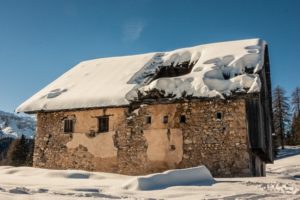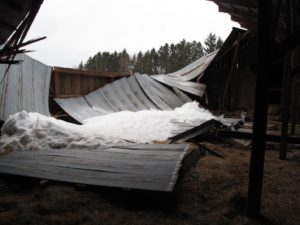While snow can create an ideal picturesque winter landscape, it also has the potential to create undesirable effects on buildings, and thus building occupants. It is important for facility owners and managers to be aware of the potential effects of snow on their buildings in order to properly maintain them, and to protect the safety of the building occupants.
The most prominent snow-related concern for buildings is the effect of snow loading. The weight of snow accumulation imparts load onto the roof framing. In some geographical locations, snow loads are the most significant loads on building roofs. For this reason, snow-related structural failures (e.g., roof collapses) and other problems sometimes occur. In the United States, such failures are most common in the northeast, midwestern, and western states.

The weight of snow itself can vary significantly. An inch of fluffy snow is much lighter than an inch of wet, packed snow. Also, the effects of drifting can affect the distribution of snow on a roof, potentially causing areas of deeper (and heavier) drifted snow. Consideration of these variables is important in building design, and in the investigation of any snow-related problem that does occur.
“Sliding snow” presents another concern for buildings, occupants, and the general public. Snow and ice falling from a roof are a hazard to people who are entering/exiting a building or are near the building’s perimeter. Also, snow sliding from a higher roof onto a lower roof can cause overloading and collapse of the lower roof. Snow guards are necessary on some roofs to prevent roof damage and mitigate the dangers associated with sliding snow. The presence of snow on roofs can also contribute to the formation of “ice dams,” which can cause water intrusion and damage to buildings.

Nelson’s professional engineers and architects are expert at diagnosing and investigating snow-related perils to buildings and other structures, and can assist with development and evaluation of remediation alternatives.

